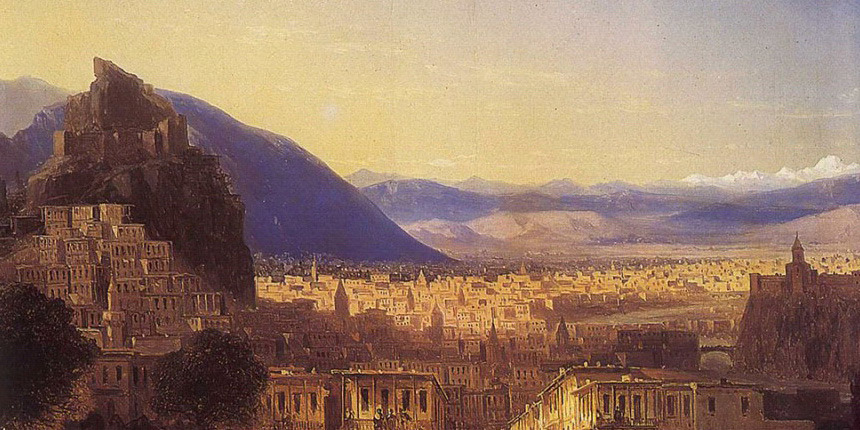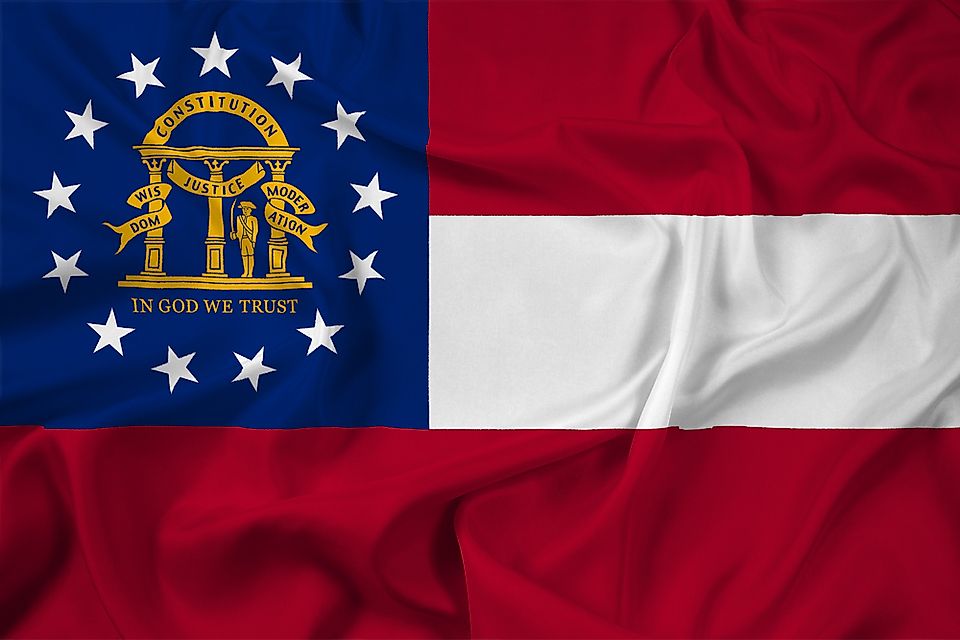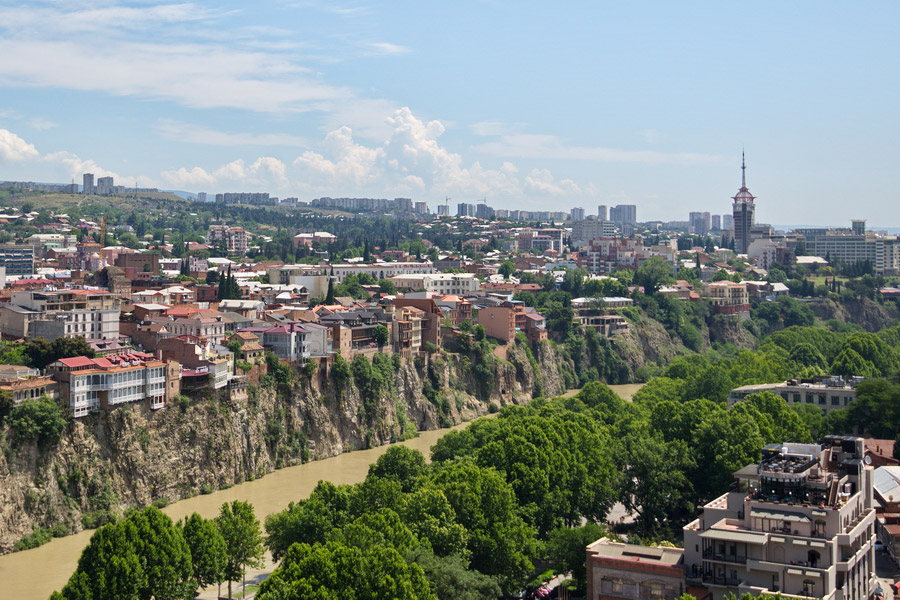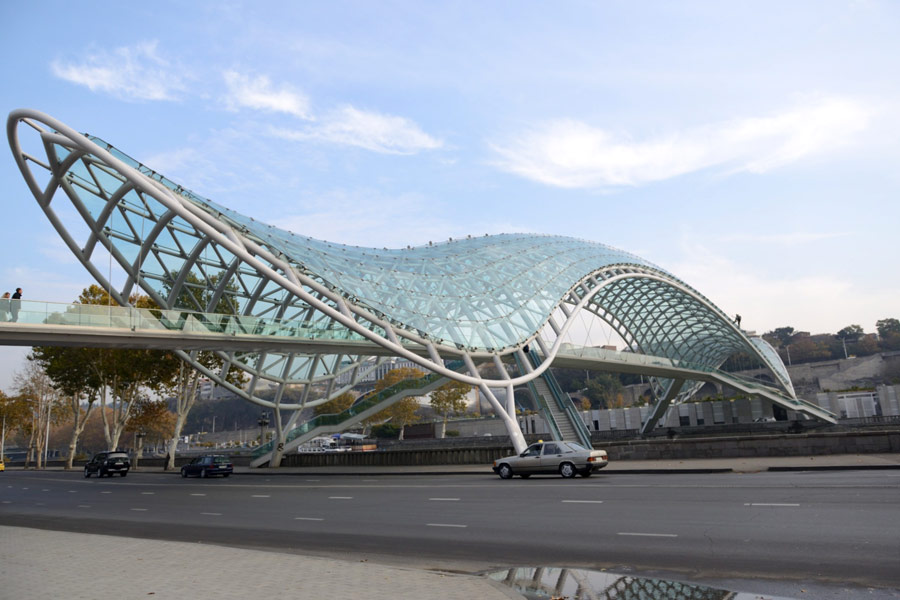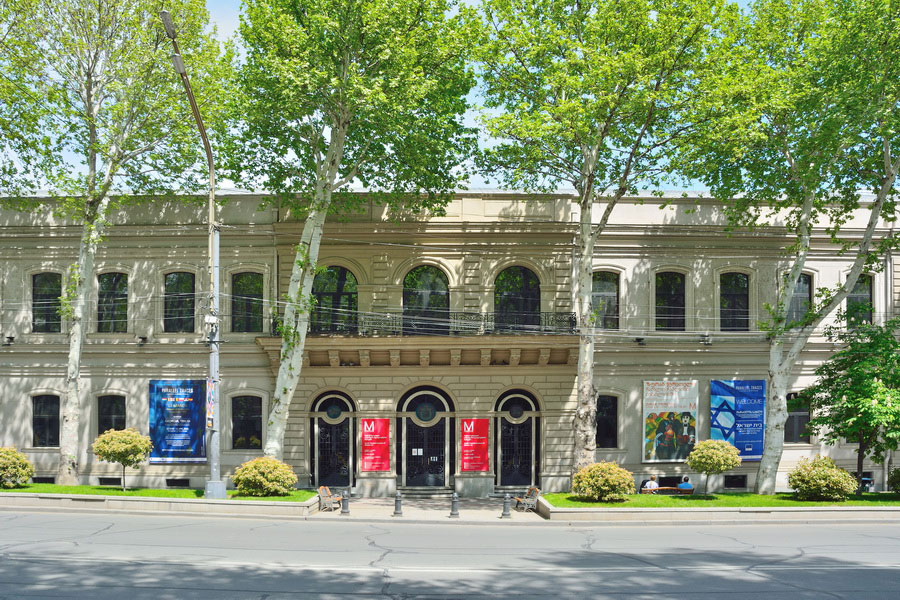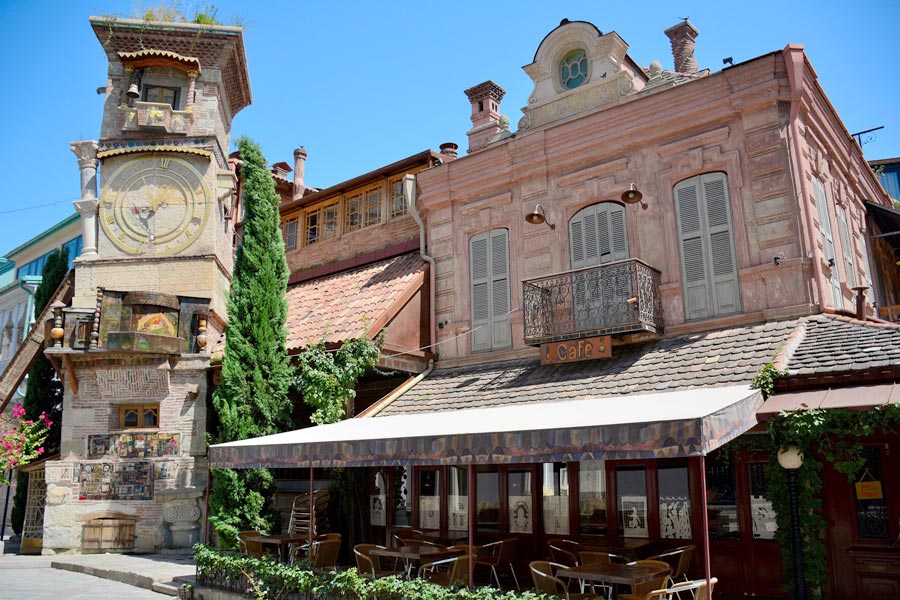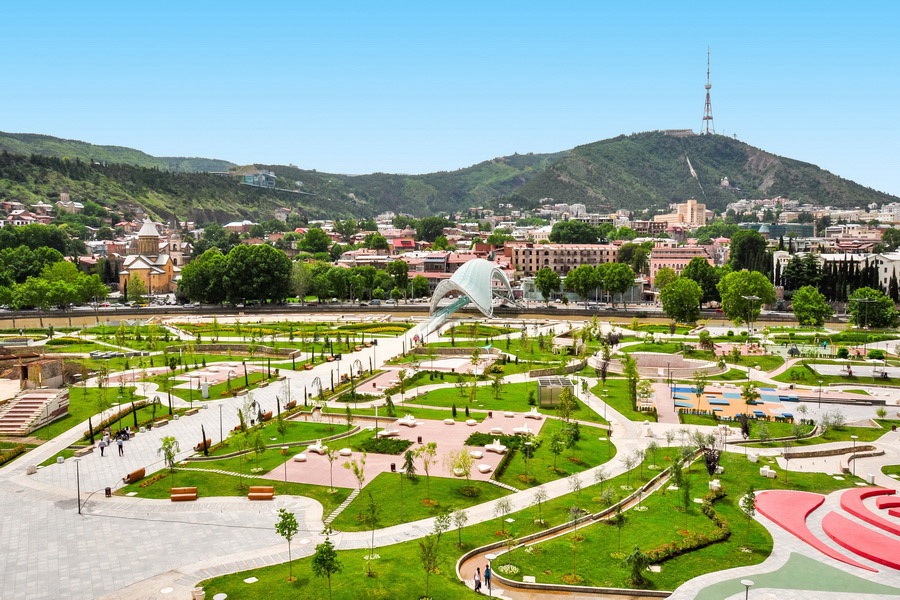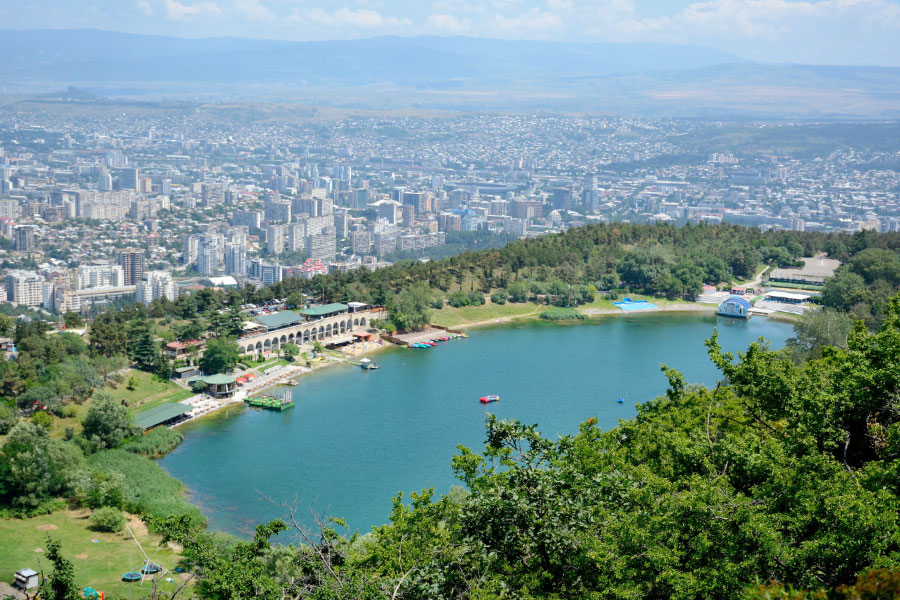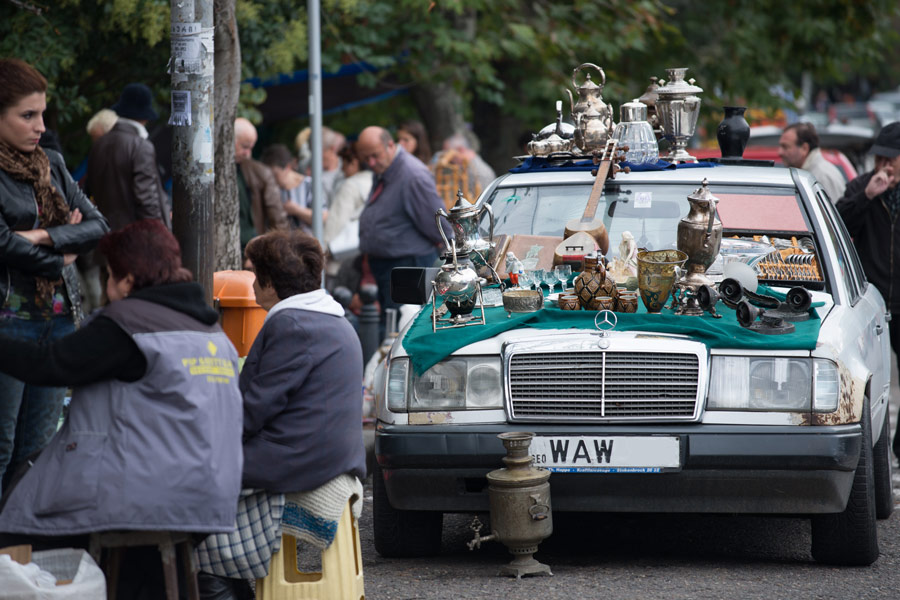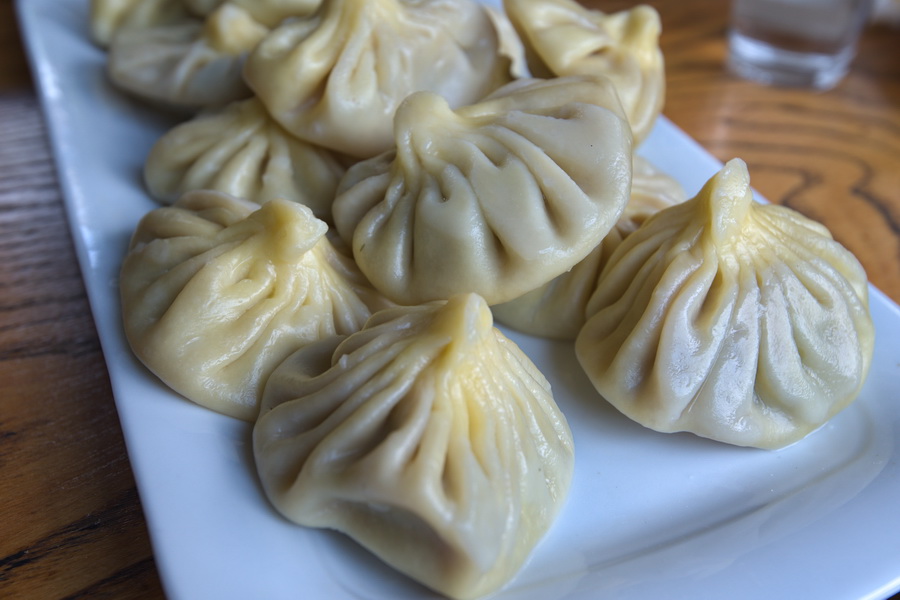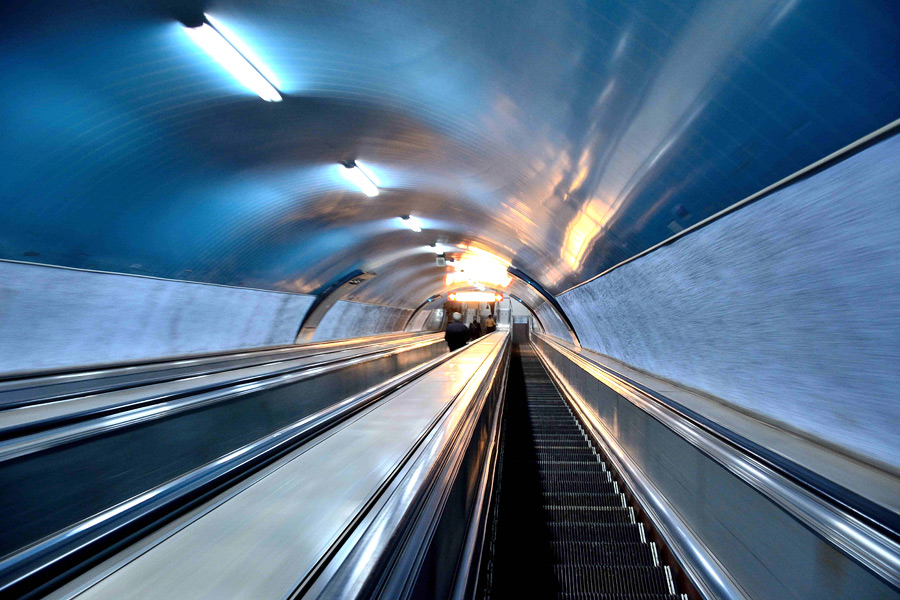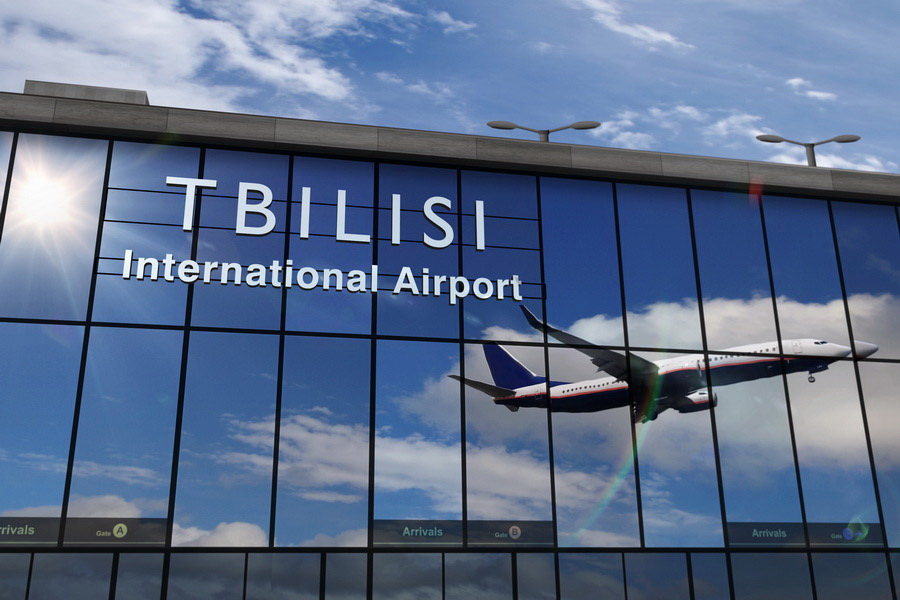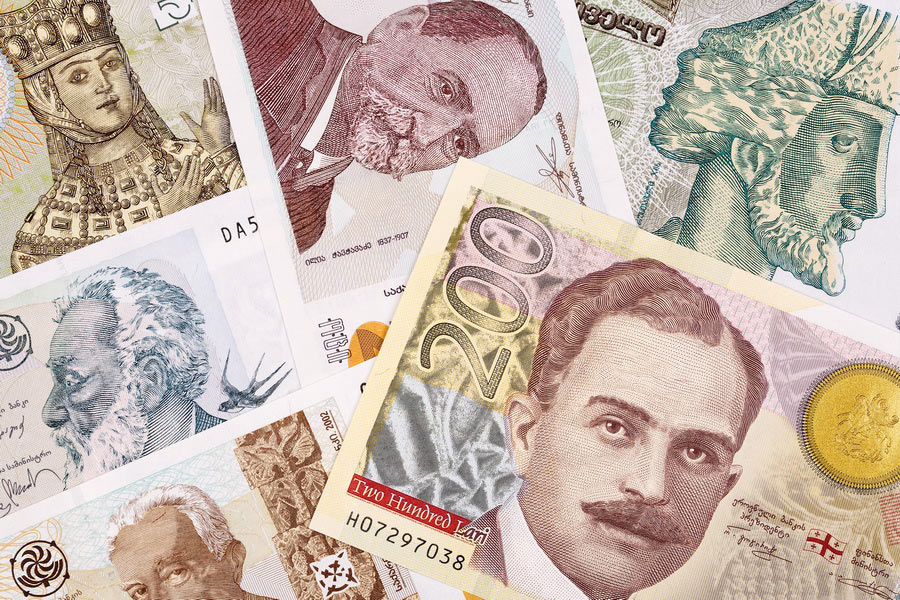What is the capital of georgia
What is the capital of georgia
Tbilisi History
History of Tbilisi covers 1500 years from the date of formation to the present time. Story of the capital of Georgia is a blend of myths and facts. According to a famous legend, back in year 458 A.D. King Vakhtang I Gorgasal was hunting in the woods on the banks of the Kura River and wounded a pheasant (some sources say it was a deer). The animal ran to the sulphur spring and immediately healed with hot waters. The King was amazed with healing features of the spring and decided to build a city around it. This is how Tbilisi (which means “warm”) appeared. In present there are famous baths in the place of the Sulphur springs that can be found around the city.
However, this is just a beautiful legend, and the real story is more prosaic. The first chronicle of Tbilisi as a fortress over the river dates back to the 4th century A.D. At that times, there already was a Persian citadel that later was named Narikala, and the capital of Georgian kings was in Mtskheta, 20 km away from Tbilisi. In the 5th century the King Vakhtang conquered and restored the Persian fortress. After the construction the capital was moved there. By the way, archeological findings state that this territory was already populated in the 4th millennium B.C.
At the same time Metekhi fortress was erected on the other bank of the Kura, where today there is a church with the same name and a monument to Vakhtang, founder of Tbilisi. This citadel became the residence of all following rulers of Georgia. The city was also surrounded by fortress walls, and the church Anchiskhati was built at that time. It is one of the rare constructions that has been preserved up to our days. The city however did not remain long in the hands of the Georgian kings and in year 626 it was seized by Persians who considered the place as their northern outpost. Thus, it was the beginning of blending of Christian and Zoroastrian cultures in the city. Since then, there has only been one temple of fire worshippers Ateshgah preserved; it is hidden from ordinary people and located inside a private residence.
Persian rule did not last long, in 653 the Arab troops of Khabib ibn Maslama came to the Caucasus. There was no bloodshed but Tbilisi and the entire Georgia was under the vassal status and was bound to pay tribute, and the Arabs guaranteed security of the residents and preservation of churches and religions. In 736, the city was seized by a more aggressive Arab commander Mervan II ibn Mukhammad, who founded the Tbilisi caliphate. However, he did not manage to conquer other cities and Tbilisi was the only Muslim city in the Caucasus. Emir of Tbilisi could not hold his power and even tried to separate it from the Arab Caliphate but his attempt failed; it was followed by a punitive army that came to the city and the Christian population had to migrate to Abkhazia.
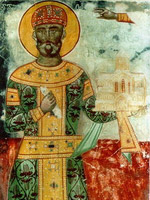
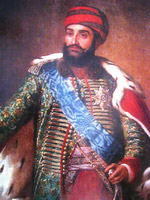
In the 19th century, Tbilisi steadily and continuously developed: new enterprises were set up, trading net and the population increased. The city became the center of the entire Caucasus; famous writers, poets and artists from Russia and Europe visited the city. Moreover, novelties such as telegraph, an opera theatre and the Caucasian Railroad appeared. The only tragic event was the earthquake of 1827 that had destroyed many houses. That is why the biggest part of the Old Tbilisi today is presented with houses of the 19th century.
In the beginning of the 20th century, Tbilisi was one of the revolutionary centers of the social-democrats who were against the Tsarist rule. Here the future leader of the USSR Josef Stalin began his work. He was the Georgian from the town of Gori, where today there is a museum dedicated to him. In 1918, after the overthrow of the Tsarist power and the beginning of the struggles of political parties, Georgia announced its independence. However, later the country was included into the structure of the Soviet Union (USSR). It was the time when the monumental construction and destruction of religion monuments had started. During the WWII there were few factories evacuated to Tbilisi from the west of Russia that positively influenced the industry of the city in the post-war years.
In the end of the 20th century, along with gaining independence of Georgia, Tbilisi kept the status of the capital, but the country was in the agony. Different regions did not accept the central power, there were uprisings and Tbilisi was the arena of some tragic events. In the beginning of the 21st century, the Rose revolution took place in Tbilisi. Only in the recent years of the newest history of Tbilisi, peaceful and quiet life can be observed.
What Is the Capital of Georgia?
The state flag of Georgia.
Georgia is a state located in the southeast United States. Atlanta has been the capital of Georgia since 1868. Previously, Milledgeville served as Georgia’s state capital. The city of Atlanta occupies an area of 134 square miles and has an estimated population of 472,522 people. Atlanta has a metropolitan population of about 5.7 million people. Since its foundation in the 19th century, Atlanta has played a significant role as a commercial, financial, biotechnology, and education center. The city has continued its upward growth throughout the 21st century. Atlanta is home to several large businesses including headquarters of international companies such as Coca-Cola. Some of the educational facilities in the city include Georgia State University, the Georgia Institute of Technology, as well as 106 public schools.
History
Atlanta existed as the home to the Creek Indians before the 19th century. The town was founded in 1836 as a railway terminus. The presence of the terminus encouraged settlement and growth of commercial stores in the area. Atlanta provided a home for freed slaves from neighboring areas. Atlanta played a significant role in the American civil war as a distribution point for army supplies. After the mid-19th century, black elite schools were founded in the region. The 20th century saw a rise in the upper and middle-class black population, later developing as a major center for the advocacy of the rights of blacks. Martin Luther King Jr., a forerunner in the civil rights movement was born in Atlanta. During the 1960s and 1970s there were increases in the commercial centers of the suburban areas surrounding Atlanta. Since the 1990s, Atlanta has grown to become a modern city with investment in infrastructural development.
Economy
Culture
The culture of Atlanta has grown from a predominantly southern one to become a diverse and multicultural metropolitan. This shift towards multiculturalism is due to increased immigration of diverse groups of people from other US states as well as outside countries. The diverse cultures are reflected in the diverse racial origins of various groups in the city, featuring whites, Vietnamese, Hispanic, Asians, and African groups. The city also embraces LGBT individuals. Atlanta is home to many galleries and museums featuring the artistic creations from various communities, eras, and individuals. Some of these museums include the High Museum of Art, the Museum of Design Atlanta, and the Woodruff Arts Centre. Music and theatrical performances are also part of this dynamic culture, with performances by the Atlanta Symphony Orchestra, Fox Theatre, and the Alliance Theatre.
Tours, Attractions and Things To Do in Tbilisi
Nestled in the heart of the Caucasus is the warm and hospitable metropolis of Tbilisi. The city, nearly as old as the snow-capped beauties that surround it, never fails to impress visitors with its auspicious and unmistakable charm.
With more than 1.5 million inhabitants, Tbilisi is the largest city in Georgia, evidenced by its fervent construction efforts: rapidly developing residential complexes, shopping malls and entertainment centers have burst upon the scene and now intermingle with the city’s enduring architecture of old. Tbilisi hotels now cater to every type of budget as the city continues to attract a growing number of foreign investors, businessmen and tourists.
Expect to be greeted by warm-hearted, exuberant citizens who stand ready to welcome guests with a friendly handshake and a glass of wine. Be it Old World history, cultural delights, authentic and long-preserved traditions or outdoor recreation, Tbilisi will prove the ideal backdrop for a vacation of unforgettable memories.
Our Tbilisi Travel Guide will give you a peek into this openhearted city full of color, laughter and beauty.
Brief History of Tbilisi
According to archeological studies, the territory of Tbilisi was settled as early as the 4th century BC. The city itself is over 1500 years old, having been founded in the 5th century AD by King Vakhtang Gorgasali. Colourful legends about Tbilisi’s inception abound and are often associated with its sulfuric hot springs that spew from the ground to this day. According to one tale, King Vakhtang was hunting for pheasants among the dense forest groves near Mtkvari River. The King’s falcon wounded a pheasant, which fell defeated into a hot lake. The healing properties of the water, however, revived the dying bird. The king was so impressed with this discovery that he decided to build a city on the spot and give it the name Tbilisi, meaning ‘Warm’. Shortly thereafter, Georgia’s capital was moved from Mtskheta to Tbilisi.
During its long history the city saw numerous conquests and survived centuries-long occupations and devastating invasions. In the 7th century, Arabs came and established the so-called Tbilisi Emirate, which lasted about four centuries. Wars with the Seljuk Turks, and later with the Persians, periodically led to the complete destruction of the city, including the loss of countless architectural masterpieces and material goods. Tbilisi, however, continued to rise from the ashes after each conquest. The last devastating invasion was carried out in 1795 by the Iranian shah Aga-Magamed Khan, who nearly obliterated Tblisi off the map. In the 19th century, the city fell under the control of the Russian Empire and soon after, along with the whole of Georgia, was annexed into the Soviet Union. Around this time the city’s resurrection began with vigorous reconstruction efforts and today, Tbilisi is counted among the most attractive, remarkable cities in the region.
Tbilisi Sites
Use our Tbilisi Travel Guide to uncover the best attractions in the city. From fortresses to parks, theatres to museums, souvenir shopping to fine dining, Tbilisi is a city that won’t disappoint!
Old Town Tbilisi
Old Town Tbilisi is a neighborhood flavored with hospitality and warmth, offering the simple delights of narrow cobblestone streets, medieval fortresses and caravanserais, not to mention the aroma of freshly baked Georgian shotis puri bread. Besides, where else could you find an Orthodox, Armenian Apostolic and Catholic church, a Jewish synagogue and a mosque for both Sunnis and Shiites all located within a five minutes’ walk from each other?
Narikala Fortress is the ultimate symbol of Old Town Tbilisi. This 4th-century fortress, perched atop a hill, was the guardian of the city for centuries, having survived many invasions and attacks. Narikala was rebuilt and restored several times and has existed in its current condition since the 17th century, when King Rostam restored it after the Turco-Persian Wars.
When you tire from walking, why not enjoy Tbilisi while suspended in mid-air in a cable car? The ride costs only a few Georgian lari and provides a truly unique perspective of the city (when Tbilisi weather allows) from its glass-bottomed cars that connect Narikala Fortress with Rike Park.
Don’t miss a visit to Abanotubani, Old Town’s longstanding district whose streets are lined with antique homes adorned with intricately carved balconies. The neighborhood is also famous for its sulfur bath houses, whose spring are credited with the city’s birth. For a truly authentic experience you can bathe in a gender-segregated public room, while gorgeously decorated private rooms are available for more bashful patrons.
Close to Abanotubani is one of the busiest boulevards in Tbilisi – Shardeni Street, packed with cafes, restaurants, clubs and souvenir shops. Dine and window-shop your way up the promenade until you reach the Bridge of Peace, which also happens to span the gulf between Old Town and contemporary Tbilisi. After crossing the bridge, you’ll find yourself back in the 21st century near Rustaveli Avenue and Freedom Square.
Tbilisi Museums
Plunge into the history, lifestyle and traditions of Georgia at one of its many worthwhile Tbilisi museums:
Tbilisi Theatres
Georgia’s love of the arts is not confined to museums, as is clear from Tbilisi’s many theatres and concert halls. While too numerous to name here, we recommend you check out at least one of the following during your Tbilisi travels:
Shota Rustaveli Theatre, housed in a late 19th-century building, is worth a visit simply to admire its stately façade and evocative murals, and is known for its passionate performances by many of Georgia’s greatest actors.
The Georgia National Opera and Ballet Theatre offers world-famous international and Georgian plays in English, Russian and Georgian.
Rezo Gabriadze Puppet Theatre was founded by Georgia’s beloved screenwriter and puppeteer Rezo Gabriadze in 1981. Apart from watching a stellar puppet performance, you can enjoy its cartoonish clocktower and aromatic coffee house.
Tbilisi Concert Hall is easily recognized for its round, glass frame. With seating for well over two thousand people, it hosts most of the city’s cultural events, including folk and dance concerts. Fountains and the famous Muse statue attract people to its premises.
Tbilisi Parks
Tbilisi weather is pleasant for much of the year, and thankfully Georgia’s capital offers plenty of outdoor activities, most notably a smattering of lovely parks.
Turtle Lake remains a local favorite. Relax under leafy green canopies, ponder life as you swim and sunbathe on its beaches, or stretch your legs with a walk or jog around the lake. Amenities include cafes, playgrounds and sports facilities.
The spacious Vake Park is another beloved spot, perfect for families with children or those seeking some peace and quiet. Within the park lie the Open Air Museum of Ethnography, World War II Memorial, a mini-carnival and abundant greenery.
Mtatsminda Park is another well-known recreation and entertainment park. You can drive there or, better yet, take a funicular! Relax and enjoy the panoramic views while creating memories with family and friends.
Rike Park is one of the city’s most popular tourist destinations, thanks in large part to the Bridge of Peace, a snazzy new glass-and-steel crossing that lights up in Morse Code at night, and to the cable cars that connect it to Narikala Fortress.
Nearby Rike Park is Tbilisi Botanical Garden, a color-laced, tempting destination for nature and picnic lovers. Be sure to dip your feet in the refreshing waterfall!
A short drive outside the city will land you among forests, charming villages and lush green nature.
Shopping in Tbilisi
Tbilisi has everything from trading centers to shopping malls and famous designers’ boutiques. In recent years, Georgian designers have grown in fame and worldwide demand, particularly Anouk and Avtandil. If you’re looking to buy some gifts for friends and family, we suggest Tbilisi Mall or East Point Mall. Both centers include a wide selection of shops, restaurants, cafes, bowling and billiard centers, a cinema and more, and are conveniently situated near many Tbilisi hotels.
The flea market at Dry Bridge is a hodge-podge collection of individuals selling everything from traditional souvenirs and handicrafts to Soviet memorabilia and original works of art. More than just a shopping trip, the Dry Bridge Market is an experience in itself, an up-close glimpse of authentic, present-day Tbilisi.
Nightlife
Tbilisi has become known among tourists as an up and coming destination for nightlife and entertainment. In fact, the city is rumored to host two of the most exclusive dance clubs in Eastern Europe. Akhvlediani Street and Chardin area are notable for bars which cater to tourists, many of which feature live music.
Tbilisi Cuisine
Georgian Food
If you plan to diet in Georgia, you will fail, for the best way to travel to Georgia is with a large appetite! The aromas of Georgia’s famous khachapuri cheese pies, tender mtsvadi kebabs, juicy khinkali dumplings and freshly baked breads will chase you down and lure you into Georgia’s first-class restaurants and cafes. Heavenly stews such as chaqapuli and chanakhi are hearty and satisfying, while succulent tolma grape leaves are well-flavored delights.
In Tbilisi you can find many restaurants that offer the full variety of Georgian dishes, as well as small bakeries selling sweet and savory pastries at very affordable prices. To really embrace Georgia’s culinary scene, consider attending a culinary masterclass, where you’ll learn how Georgian food varies from region to region and discover the secrets behind some of the country’s most beloved dishes.
Vegetarian Restaurants
You can order vegetarian or vegan dishes in almost every restaurant in Tbilisi. Georgians love vegetables and pride themselves on their many salads and liberal use of greens. Vegetarian guests will especially appreciate pkhali (cold appetizers comprised of spices, nuts and vegetables), shetchmandy (vegetarian soup made with nuts and grains) and lobio (bean soup served with corn bread). Exclusively vegan cafes, including both Georgian and international restaurants, can now be found in Tbilisi.
Coffee Shops
Cafes with elegant retro décor, old Tbilisi apartments converted into tea houses, small corner teashops and basement bistros offering to paint your portrait on a mug are just a few of the gems you can expect to find in Tbilisi, each one sure to make your stay even more enjoyable. Whether you’re a devoted fan of a worldwide chain or looking to try something local, Tbilisi has a delicious and cozy option waiting for you.
Public Transport in Tbilisi
Thanks to a well-developed public transportation system, intercity Tbilisi travel is a cheap and comfortable way to explore the city while allowing you to interact with locals and observe their lifestyle in the process.
Buses
Tbilisi’s bus system is intricate and well-organized. The city hall purchased new and modern buses, equipped with air-conditioning and wheelchair lifts, in 2019. The cost of each ride is 0.50 tetri (approximately 0.16 USD). For a quicker alternative, the city is also well-serviced by minibuses, costing 0.80 tetri (approximately 0.25 USD) per ride. You can pay in cash or with a plastic transport card.
Metro
Tbilisi’s metro system has 2 lines that service most of the city. Train cars were recently upgraded, and the metro now provides a fast, inexpensive and comfortable ride for tourists.
The cost of each ride is 0.50 tetri (approximately 0.16USD) and you must pay with a transport card, which may be purchased at every metro station. Tbilisi is considered a very safe city, and so long as you observe normal precautions, taking the metro even during rush hour is a safe, if not crowded, option.
Taxis
Several well-known taxi companies operate in Tbilisi. You can order a taxi via an app on your phone or through a call center. Every major company offers services in English. You’ll usually be given the option of choosing a regular or premium service, and taxi fares will differ accordingly. Generally, taxis in Tbilisi are quite affordable and one of the most convenient ways to explore the city. We do advise you to use an app rather than stopping a taxi on the street, so as to avoid language barriers, being overcharged or difficulties in finding the address.
Car Rental
Renting a car is a very simple task in Tbilisi, provided you have a valid driver’s license, a passport and are at least 21 years of age. There are several car rental companies that offer vehicles of every type and class, starting from affordable sedans to SUVs and Bentleys. Tbilisi traffic regulations are pretty standard, but it’s still advisable to familiarize yourself with local laws before driving independently.
Other Types of Public Transport:
Looking for something a little out of the ordinary? Why not explore the city in a cable car or a funicular, both of which offer quick uphill rides and panoramic city views. The funicular will take you to Mount Mtatsminda, and the cable cars to Narikala Fortress and the observation platform next to the Mother of Georgia monument. You will need a transport card, which can be purchased at the station on the spot.
While city bike rentals are currently not available in Tbilisi, bike paths are regularly being added and expanded in the city and may be enjoyed by those in ownership of a private bicycle.
How to Get to Tbilisi
The fastest and most convenient way to travel to Tbilisi is by plane. Tbilisi International Airport regularly receives aircrafts from all over the world, including from Turkey and many European and Asian nations, meaning that you’re likely just hours away from this dream destination! The airport is clean, comfortable and equipped with everything you could hope to find at a mid-size international airport, including a Tbilisi tourist office.
If you have the time, the best way to travel to Georgia from neighbouring Turkey, Azerbaijan, Armenia and Russia is by private vehicle or train. For a true cultural experience, take a train from Baku (13 hours) or Yerevan (5.5 hours).
Travellers up for a real adventure can take a ferry from Sochi, Russia to Georgia’s seaside city Batumi, and from there arrive in Tbilisi via train, plane or vehicle. We advise taking the 2-storey Batumi-Tbilisi train, complete with Wi-Fi, new wagons and free drinking water. You’ll enjoy the calming scenery as you interact with friendly locals who can entertain you with endless stories about their beloved country.
Spoken Languages in Tbilisi
The state language of Georgia is Georgian, considered to be one of the oldest languages in the world. Its original script, consonant-heavy words and status as one of the most unique languages on earth further add to its beauty and mystique.
Georgian is widely spoken on the streets of Tbilisi. Pronunciation of this language is a challenge (thanks to those consonant-heavy words), but many young people can speak English very well, while older generations can freely communicate in Russian. Tbilisi is a multinational and multilingual city – home to many expats, you can easily find foreign language clubs and meetings for language exchange. If you wish to feel like a local and endear yourself to the Georgian people, we advise you to learn several words in Georgian, such as gamarjoba (hello) and madloba (thank you).
Tbilisi Currency
The Georgian Lari (GEL) has been the national currency since 1995. Both paper bills and coins of various denominations are in circulation. Each domination of bill portrays a famous Georgian public figure. You can easily exchange money at the airport or in the city. In Tbilisi, most restaurants and shops accept credit cards, but we still advise you to have cash for smaller cafes and souvenir shops. ATM machines are also widely available throughout Tbilisi.
Is Tbilisi Safe?
Tbilisi is a warm and welcoming city, and visitors overwhelmingly report feeling safe on its streets. You can freely explore the city any time of day or evening. Tbilisi is equally safe at night, as police patrol the streets 24/7. Night owls will appreciate the illuminated Bridge of Peace, a wide choice of cosy cafes that operate well into the evening and the lively Tbilisi nightlife found at countless bars and clubs.
Not only is it safe to travel to Tbilisi, you’ll be greeted by some of the most kind-hearted people you’ve met. Once you’ve visited, you’ll understand why Georgians are renowned for their hospitality. Citizens welcome you with a warm smile, are quick to offer help and will often even accompany lost travellers to the right destination. Whether traveling alone or with your family and friends, you can be confident that peace, friendship and safety await you in Georgia’s warm and welcoming capital.
If the Tbilisi Travel Guide has piqued your interest in Georgia, keep reading to get tips for planning your upcoming vacation or check out our most popular Georgia tours.
What is the Capital of Georgia?
What is the Capital of Georgia? Tbilisi is the capital of Georgia and is located on both sides of the Kura River.

Tbilisi is an industrial, social and cultural center. It is also located on the transition line of an important global energy project (Baku-Tbilisi-Ceyhan Pipeline). The city is located on the historic Silk Road. Therefore, in Russia’s North Caucasus, Turkey and the South Caucasus, Armenia, and Azerbaijan it has had an important role to play in history.
When did Tbilisi Become the Capital?
David IV of Georgia entered the city of Tbilisi in 1122 and provided absolute sovereignty. The Kingdom of Georgia carried the administrative center from Kutaisi to Tbilisi, and Tbilisi became the capital of Georgia. In the 12th and 13th centuries when the golden age of Georgia lived, Tbilisi showed great improvement and the population of the city reached 80,000. The city has become a center of culture and literature. In the Queen Tamar era, the famous poet Shota Rustaveli continued to work in Tbilisi and probably wrote his famous epic, The Man in the Panther’s Skin. In this era, it is referred to as the Georgian Renaissance or the Golden Age.
After the Golden Age..
Tbilisi’s “Golden Age” did not last a hundred years. In 1236, after the Mongol invasion, Georgia entered the Mongol domination. The Tbilisi, both politically and culturally, was under the influence of a powerful Mongolian the following century. In the 1320s the Mongols were removed from the country and Tbilisi became the capital of the Georgian state. However, the city faced a new destruction in 1366. From the 14th century until the end of the 18th century, Tbilisi came under the invasion of various forces. Timur, Shah Jahan, Uzun Hasan, Aga Mohammed have plundered the city.
Features of Tbilisi
Tbilisi has a population of 1.04 million as of 2018. The surface area is 350 square kilometers. The weather in Tbilisi, which has a humid subtropical clime, is hot in summer and cold in winter. Annual average temperature is 12.7 degrees. In January, which is the coldest month, the temperature is 1 degree, the warmest month is 25 degrees in July. It is raining most in May and June.
The territory of Georgia is mountainous and divided into three regions. The North Caucasus Mountains, which stretch like a set in the north, form a series of parallel mountain strands rising eastward and separated by deep valleys. The highest points of the region are Shkhara (5,068 m), Rustaveli (4,960 m), Tetnults (4,852 m).
Georgia is rich in mining. The main underground resources are coal, manganese, oil, natural gas, and marble. Forests and bushes cover one-third of Georgia’s land. Alpine-type vegetation is dominant in high sections. In the forests, there are various trees such as oak, chestnut, beech, Caucasian fir, ash, linden, Pitsunda pine. The territory of Georgia is rich in wildlife.
Important Places to See in Tbilisi
Having the extraordinary nature of the Caucasus, Georgia is truly a country worth seeing. Each city has a different composition and natural beauty. The capital Tbilisi contains all the lines of old and new life. Tbilisi, the capital of Georgia, is located on the foothills of Trialeti and in the eastern part of the country. An ancient crossroads between Asia and Europe in Tbilisi, which has a magnificent view of the Old Town of Europe. It is a worthy destination with its narrow winding streets, magnificent religious buildings, traditional wooden houses and caravanserais. At the beginning of places to visit in Tbilisi; Old Tbilisi, Gabriadze Theater and Museum of Fine Arts.
Why Is Atlanta the Capital of Georgia?
Known for its diversity of landscapes, the state of Georgia has a lot of natural beauty. It’s located in the southeastern part of the United States, west of the Atlantic Ocean, and borders Florida, South Carolina, North Carolina, Tennessee, and Alabama. You’ll find lots of rivers, beaches, and mountains, like the forested Blue Ridge, in this stunning state.
Georgia has a population of around 10.6 million people, and is home to many prominent cities, including Atlanta, Savannah, Augusta, and Columbus. Atlanta is the largest city in the state, with a population of about 498,044 people. Atlanta is also the capital of Georgia.
Georgia has actually had five capitals in total though. So how did the state finally come to settle on Atlanta? Was it because of the high population, or something else? Let’s explore more about the history of Georgia to find out.
The Capital of Georgia
The area around modern-day Georgia had been home to various Native American tribes for thousands of years. The Spanish would be the first Europeans to arrive, coming in the 16th century, but focusing mainly on mission work when they found no gold.
The English would come in the 1730s, led by James Oglethorpe, a British MP. He would help establish the colony of “Georgia”, named after George II of Great Britain. The first wave of settlers would arrive in what would become the colony’s first capital, Savannah.
As one of the 13 Colonies, Georgia would take part in the American Revolution. It was during this conflict that Savannah would fall to the British. Georgia’s government fled to Augusta, and for the next few years the capital would rotate between Savannah and Augusta. But in 1783, needing a permanent seat of government, lawmakers would formally make Augusta the sole capital of Georgia.
However, many felt Augusta was located too far east, and so in 1786 the legislature appointed a commission to find a new site for a centrally located capital. It would take 10 years, but finally the capital of Georgia would move to the newly constructed Louisville (named in honor of the French King, who had assisted the Colonists in the Revolutionary War).
Louisville’s stint as capital wouldn’t last long, however. As more Native lands were stolen, the state would expand. With malaria proving to be an issue in Louisville, soon there were calls for a new capital even further inland. In 1804, Milledgeville, named after Georgia governor John Milledge, became the new capital of Georgia. It remained the capital until 1868, including during the American Civil War.
Why is Atlanta the Capital of Georgia?
After the 1821 Indian Removal Act, the Muscogee (among others) were forcibly removed from their land by the federal government. This paved the way for white settlers to take over land in the northeastern part of Georgia. Atlanta would be established in 1836 as a rail link between the Chattahoochee River and the Tennessee River. The industrial growth of Atlanta would lead to almost immediate calls that it should be the capital.
Following the American Civil War, much of Atlanta, and the entire state, had to be gradually rebuilt. Jobs in Atlanta attracted an even greater wave of new residents. With a superior rail and transportation network, the Reconstruction government voted to move the capital of Georgia from Milledgeville to Atlanta in 1868.
Today Atlanta remains Georgia’s fifth, and final, capital.
If you found this post interesting, you might also want to check out:
